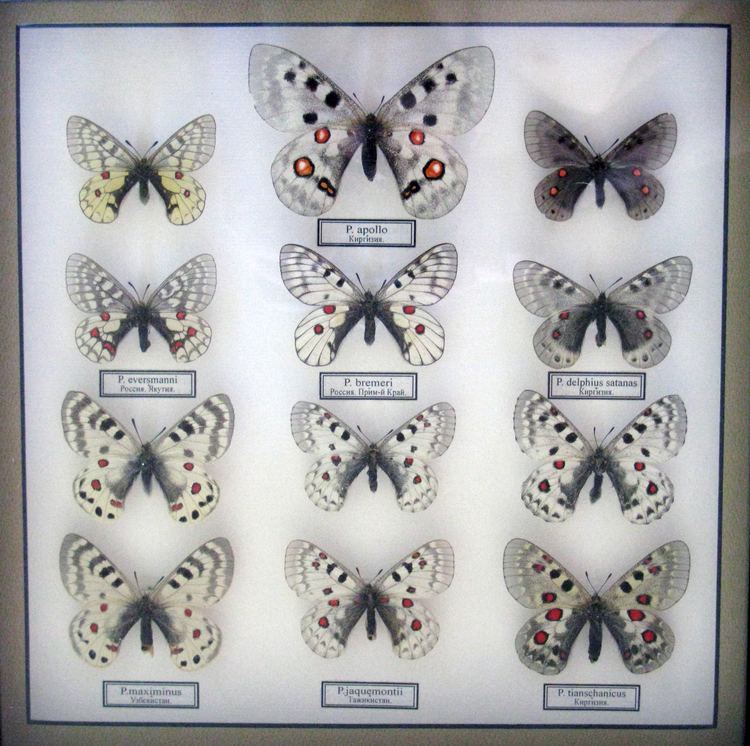Subfamily Parnassiinae Rank Genus | Family Papilionidae Scientific name Parnassius | |
 | ||
Lower classifications Apollo, Clouded Apollo, Parnassius phoebus, Parnassius eversmanni, Parnassius delphius | ||
The apollo parnassius apollo on the banks of the jabron
Parnassius is a genus of northern circumpolar and montane (alpine and Himalayan) butterflies usually known as Apollos or snow Apollos. They can vary in colour and form significantly based on their altitude. They also show an adaptation to high altitudes called altitudinal melanism. They show dark bodies and darkened colouration at the wingbase which helps them warm faster using the sun.
Contents
- The apollo parnassius apollo on the banks of the jabron
- Female clodius parnassian parnassius clodius
- Identification and ecology
- Synonymy
- Evolutionary relationships
- Important collections
- References
Although classified under the swallowtail butterfly family, none of the Parnassius species possesses tails.
The larvae feed on species of plants belonging to the Papaveraceae and Crassulaceae families, and like the other swallowtail butterfly larvae, possess an osmeterium. Unlike most butterflies that have exposed pupae, they pupate inside a loose silken cocoon.
Female clodius parnassian parnassius clodius
Identification and ecology
The Parnassius species of butterflies are often hard to identify and can sometimes only be identified by dissection of the genitalia. The phylogeny of the group is still under study using molecular techniques. The exact number of species within the genus is disputed and numbers range from 38 to 47.
The Parnassius butterflies also have a peculiar reproductive strategy in that the male has special accessory glands that produce a mating plug that seals the female genitalia after mating. This is believed to ensure the success of the male and to prevent other males from mating and avoids sperm competition.
Butterflies of this genus have been widely used models to study metapopulations, population genetics and gene flow. Their patchy distribution and restricted migration makes them vulnerable to the effects of genetic drift and considerable colour variations can exist in individuals from different regions.
Synonymy
Eight subgenera are recognized within the genus.
Other names that are no longer valid include
Evolutionary relationships
A molecular phylogenetic study from 2008 suggests firstly that Baronia brevicornis Salvin 1893, rather than belonging to an outgroup Baroniinae belongs to Parnassiini, together with Hypermnestra and Parnassius. Secondly that the earliest split within the genus Parnassius is between subgenus Parnassius (the 'apollo' group, whose caterpillars feed on Crassulaceae, exceptionally Saxifragaceae) and the ancestor of the remaining seven subgenera. The existence of the subgenera is confirmed by molecular phylogenies. Six of the other subgenera have Fumariaceae as the larval food plant, while the larvae of the remaining genus Kreizbergia feed on Scrophulariaceae
